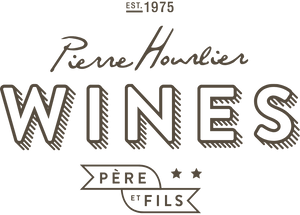Happy Languedoc Day! The Home of Creativity and Diversity
24 May 2018
Chateau Guery, Vin de Pays d'Oc, Languedoc
Happy Languedoc Day! We would like to share with you the story of the region and its producing history, and share some insight into a few of our Languedoc vineyards, which actively achieve diversity and creativity in their wine-making.
The History Of Languedoc Wine
The first vines thought to have been grown in the Languedoc area, was the Carignan, Cencibel (Tempranillo), Mourvedre, Grenache and Syrah grapes, around the 13th century, which was before the creation of Champagne.
Around the early 19th century, Phylloxera hit the vineyards, which is a tiny bug that eats the roots of the vines. This lasted for about 10 years, ravishing nearly every vine in the country, causing all of these to be uprooted, burnt and replaced. The cure was thought to be found in Montpellier in their science schools, allowing Languedoc to recover from this quicker than a lot of the other French wine regions. In 1948, Fitou was awarded the first Appellation d’Origine Controlée (AOC) in the area, followed by Corbieres, Minervois, Faugeres and St Chinian. This allowed the Languedoc winemaking to be focused on quality. In the 1980s winegrowers started planting Cabernet, Merlot, Chardonnay, Pinot Noir and Sauvignon Blanc, which allowed the diversity and creativity to be found in Languedoc.
Over time the Vin Délimité de Qualité Supérieure (VDQS) wines were recognised to have a lower, less stricter body governing the quality, making these wines not as preferred. However, as the Vin de Pays d'Oc and other subregions appeared, some of these wines were recognised to be as good as some of their AOC counterparts, however their wine-making status allowed the wines to be more inventive and experimental.
Domaine Sicard, Minervois, Languedoc
Did You Know?
The Languedoc Wine Region produces over 13.6 million hectolitres of wine annually, which is the equivalent to 1.8 billion bottles of wine.
More than a third of French wines are produced in Languedoc.
Overall, Languedoc produces 76% red, 14% white, and 10% rose wines.
Credit to Sud de France
A Look Into Some Of Our Winemakers:
Over the years, we have selected winemakers that we believe to be showing the most diversity and creativity in a tasteful fashion. We import from vineyards across the Languedoc region, including subregions such as the Minervois, La Clape and Saint-Chinian.
Domaine Pierre Cros, Minervois, Languedoc
Pierre Cros
Pierre Cros, who's domaine is located in the Minervois Appellation, is widely known as the King of Concentration due to his wine-making skills – so, unsurprisingly, his wines are full-bodied and entirely superb! Some of his vines were planted as far back as 1905, and the results are no less than historic - look out in particular, for his 'Vieilles Vignes', made from the Carignan grape. On top of his classics Monsieur Cros is an experimental wine genius continually pushing the boundaries with a wine-making savoir faire. His wines certainly live to the Languedoc motto "where creativity meets diversity".
He is known for his creativity in winemaking, his Liberte collection is outside of the Minervois AOC, in Vin de France, because of the winemaking rules in the Minervois compared to the wines he wanted to create. Using an Italian grape for one of his wines (Nebbiolo), with these being conserved in wine bottles different to the rest of his collection. Being a part of his 'la liberte' collection, which was created to show his skills and show a different side to winemaking- the liberal. Through changing this, Pierre Cros showed the different creativity and fun that can be had in winemaking.
Les Aspres regularly wins the coveted three-star award from Guide Hachette, and Pierre also produces a stunning red wine, aptly named 'Tradition'.
Chateau de Cointes, Cotes de Prouilhe, Languedoc
Château de Cointes
Chateau de Cointes is located in the Côtes de Prouilhe, situated south of the fortified city of Carcassonne in south-west France. The owners, Anne and Francois (he's a GP during the week and grower at the weekend), have taken over the vineyard from their family, who established the business over twenty years ago. They produce a range of single-grapes wines, as well as more complex whites and reds. This vineyard is in the Malepere - so permitted grapes include Bordeaux varieties such as Merlot and Cabernet Sauvignon, as well as Mediterranean grapes such as Syrah and Grenache.
Les Paissels, Saint Chinian, Languedoc
Les Paissels
Les Paissels, located in the Babeau, 5km from Saint-Chinian on schist slopes, this 6 hectar vineyard was inherited from grandfather of Vivien in 2011. This vineyard has been created and maintained by generations of farmers, gradually specialised in the making of wine. The family is passionate, and attached to these few acres of vines.
Vivien and their family value themselves in biodiverse winemaking practices, including not adding chemical fertilisers to the vines and handpicking the grapes. The vines on their plot range from 30 to 100 years old, allowing them to achieve diversity in their winemaking. Their final additions of vines was in the 1980s, when Grenache, Mourvèdre and Syrah were planted.












